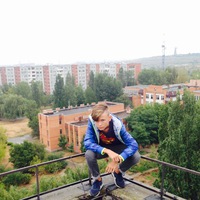
Жил в степи все лето колокольчик. Хорошо ему было среди других цветов! Обычно рано просыпался он
после короткой ночи. Оглядывался кругом: синий день над степью, солнышко светит. А высоко в небе жаворонок смеется. И всё это было ему родным и близким. Но однажды проснулся колокольчик ночью от сильного холода. Смотрит — а кругом всё белым-бело! Снег выпал. Его и не ждали! И стал колокольчик замерзать. Дрожит и думает: «Когда же придет день? Наверное, он ушел куда-нибудь по делам и скоро вернётся. Ведь когда наступит день, сразу станет тепло и уютно». Но до утра было далеко. А колокольчик не привык к холодам. И тогда спросил он у снега: — Не видели ли вы день? Ничего не ответил снег. Только еще больше потянуло от него холодом. Тогда колокольчик нагнулся и тихо прозвенел ветру: — Не видели ли вы день? — У-у-у-у? — не понял ветер. — Видели ли день? — снова повторил колокольчик. Подошел к нему поближе студёный ветер, чтобы лучше расслышать, да тут и замёрз колокольчик. О ту пору ехал по дороге человек на лошади. Увидел он цветок, подобрал, повесил на дугу своих саней и отправился дальше. Едет, едет, вдруг слышит: заговорил маленький колокольчик. Может быть, оттаял от тепла человеческих рук, а, может быть, ещё почему. Но только спросил он опять, нежно зазвенев в морозном воздухе: — Видели ли день? Видели ли день? Понравилось людям, как разговаривает колокольчик. И они начали делать такие же колокольчики из серебра. И даже когда люди отлили большой-большой колокол, чтобы он созывал всех христиан на молитву в храм Божий, он тоже громко спрашивал у всех: — День? — День? — День? — День? Вот какая была интересная история с обыкновенным полевым цветком. В ЭТОМ ТЕКСТЕ МНЕ НАДО 3-4 МНОГОЗНАЧНЫХ СЛОВА СРОЧНО 0
0
 0
0
Ответы на вопрос
 Внимание! Ответы на вопросы дают живые люди. Они могут содержать ошибочную информацию, заблуждения, а также ответы могут быть сгенерированы нейросетями. Будьте внимательны. Если вы уверены, что ответ неверный, нажмите кнопку "Пожаловаться" под ответом.
Внимание! Ответы на вопросы дают живые люди. Они могут содержать ошибочную информацию, заблуждения, а также ответы могут быть сгенерированы нейросетями. Будьте внимательны. Если вы уверены, что ответ неверный, нажмите кнопку "Пожаловаться" под ответом.

жаворонок
колокольчик
студёный.
дуга
история
 0
0
 0
0

The Story of the Bellflower
Once upon a time, there was a bellflower that lived in the steppe. It enjoyed its time among the other flowers and felt a sense of belonging. The bellflower would wake up early after a short night and look around. The blue sky stretched over the steppe, and the sun shone brightly. Up high in the sky, a lark laughed. All of this felt familiar and close to the bellflower.
However, one night, the bellflower woke up from the intense cold. It looked around and saw that everything was covered in white. Snow had fallen, and it was unexpected. The bellflower started to freeze and tremble. It wondered when the day would come. It thought that maybe the day had gone somewhere and would soon return. After all, when the day arrived, it would immediately become warm and cozy. But morning was still far away, and the bellflower was not accustomed to the cold.
So, the bellflower asked the snow if it had seen the day. The snow didn't respond, and the cold only intensified. The bellflower then leaned over and softly rang to the wind, asking if it had seen the day. The wind didn't understand and approached closer to hear better, but in doing so, it froze the bellflower even more.
At that time, a man on a horse was traveling along the road. He noticed the flower, picked it up, hung it on the bow of his sleigh, and continued on his way. As he rode, he suddenly heard a small bell ringing. Perhaps the flower had thawed from the warmth of the man's hands, or maybe there was another reason. But as soon as he heard it, he asked again, gently ringing in the frosty air, "Have you seen the day? Have you seen the day?"
People liked the way the bellflower spoke, and they started making similar bells out of silver. Even when they cast a large bell to call all Christians to prayer in the church, it also loudly asked everyone, "Day? Day? Day? Day?"
This is the interesting story of an ordinary field flower.
The story of the bellflower contains several ambiguous words.
Unfortunately, the search results did not provide specific definitions for the ambiguous words in the text. However, based on the context, here are some possible interpretations:
1. Steppe: A large area of flat grassland, typically found in southeastern Europe or Asia. 2. Bellflower: A type of flower that has bell-shaped blossoms. 3. Lark: A type of bird known for its melodious song. 4. Snow: Frozen precipitation in the form of white ice crystals that fall from the atmosphere. 5. Day: The period of light between sunrise and sunset.
Please note that these interpretations are based on the context of the story and may not be the only possible meanings for these words.
 0
0
 0
0
Топ вопросов за вчера в категории Русский язык
Последние заданные вопросы в категории Русский язык






-
Математика
-
Литература
-
Алгебра
-
Русский язык
-
Геометрия
-
Английский язык
-
Химия
-
Физика
-
Биология
-
Другие предметы
-
История
-
Обществознание
-
Окружающий мир
-
География
-
Українська мова
-
Информатика
-
Українська література
-
Қазақ тiлi
-
Экономика
-
Музыка
-
Право
-
Беларуская мова
-
Французский язык
-
Немецкий язык
-
МХК
-
ОБЖ
-
Психология
-
Физкультура и спорт
-
Астрономия
-
Кыргыз тили
-
Оʻzbek tili















